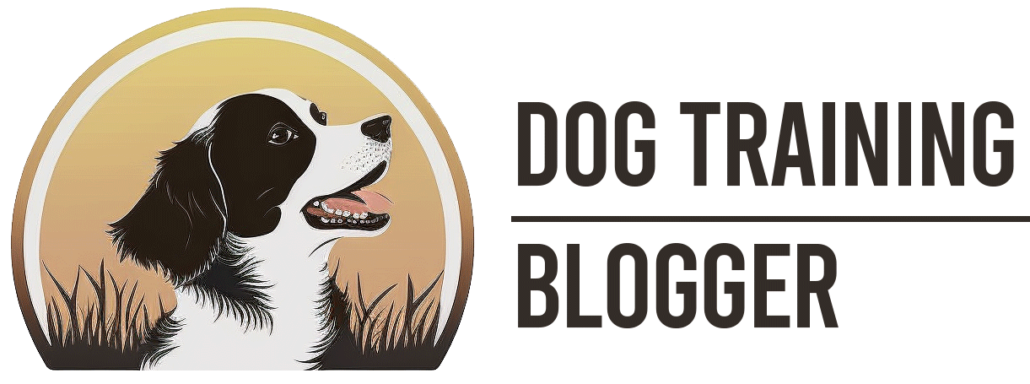Mastering the Art of Dog Training: Patience and Timing
Are you ready to take your dog training skills to the next level?
Today, we’re exploring two essential components that can make a world of difference in your dog training journey. These are simply “patience” and “timing”.
Surely it cannot be that simple? Yes and No.
Mastering the art of dog training takes time, effort, some failures and many wins too. But this is a process anyone can learn for dog training so, let’s dive in and find out how patience and timing can transform your relationship with your four-legged friend.
| Key TakeawayS |
|---|
| The Power of Patience: Patience is crucial for building trust and confidence in your dog, leading to a more positive training experience. |
| Overcoming Frustration: Taking breaks, breathing deeply, and staying positive can help you remain patient during training sessions. |
| Understanding Your Dog’s Learning Pace: Recognize that each dog has their own unique learning speed and adjust your training approach accordingly. |
| Celebrating Small Victories: Acknowledging and celebrating even the smallest achievements can keep both you and your dog motivated. |
| The Importance of Timing: Well-timed rewards are essential for effective reinforcement in reward-based training. |
| Mastering Timing: Be prepared with treats or a clicker, act fast to reward good behavior, and maintain consistency to ensure success. |
| Avoiding Common Timing Mistakes: Beware of rewarding too late, rewarding the wrong behavior, or providing inconsistent rewards during training. |
| Recognizing Your Dog’s Emotional State: Pay attention to your dog’s body language to gauge their emotions and adjust your training approach as needed. |
| Adapting to Your Dog’s Emotional Needs: Adjust your training techniques to cater to your dog’s emotional state, ensuring a more effective and enjoyable experience. |
The Power of Patience in Dog Training
In this first section, we’ll explore the incredible impact patience can have on your dog training journey.
You’ll learn about the benefits of being patient with your dog, how to overcome frustration during training, and how your patience (the key here is “your patience”) contributes to building trust and confidence in your canine companion.
The Benefits of Being Patient with Your Dog
Patience is a virtue, especially in dog training.
As a dog trainer, by staying patient, you’re allowing your dog the time and space they need to learn and grow. This helps build a strong bond between you and your dog and encourages a positive, stress-free training environment.
Overcoming Frustration: Tips for Staying Patient During Training
We’ve all been there – your dog just doesn’t seem to be “getting it,” and frustration sets in.
But don’t worry! Here are some really simple tips to help you stay patient during training:
- Take a break
If you feel overwhelmed, take a step back and resume training later.
- Breathe
Deep breaths can help you stay calm and focused.
- Stay positive
Remember that progress takes time, and every dog learns at their own pace.
How Patience Builds Trust and Confidence in Your Dog
By being patient, you’re showing your dog that you believe in them and their ability to learn.
This helps build trust, and in turn, your dog will become more confident and willing to learn new things.
Sometimes your dog will pick up immediately on what you want them to do, other times, they’re away with the fairies. This is the joy of dog training. It needs to be fun for both of you and it can be a matter of taking a few minute’s break and its like you have a new dog in front of you!
Understanding Your Dog’s Learning Pace
Every dog is unique, and so is their learning pace.
In this section, we’ll delve into the importance of recognizing your dog’s individual learning speed, discuss how to adjust your training approach to suit their pace, and highlight the significance of celebrating the many small victories along the way.
Recognizing Individual Differences in Learning Speed
Just like humans, every dog is unique and has their own learning speed.
Some dogs may pick up new commands quickly, while others may take a bit more time. It’s crucial to recognize your dog’s individual learning pace and adjust your training approach accordingly.
Adjusting Your Training Approach to Suit Your Dog’s Pace
When training your dog, it’s essential to be flexible and adapt your techniques to match their learning speed.
For instance, if your dog seems to be struggling with a specific command, try breaking it down into smaller steps or using different training methods to help them understand better.
Celebrating Small Victories
The key to long-term success with training your dog really is about celebrating the small wins.
Remember, progress is progress, no matter how small! Celebrate your dog’s achievements, even the little ones, and you’ll both feel more motivated and enthusiastic about training.

The Importance of Timing in Reward-Based Training
Timing is everything, especially when it comes to reward-based training.
In this section, we’ll uncover the science behind the role of timing in dog training, provide tips for mastering well-timed rewards, and discuss common timing mistakes and how to avoid them for more effective training sessions.
The Science Behind Timing: How Dogs Learn Through Reinforcement
Dogs learn through a process called “operant conditioning”, where behaviors are strengthened or weakened by their consequences.
In reward-based training, providing a treat or praise immediately after your dog performs a desired behavior reinforces that behavior, making it more likely to be repeated in the future.
Mastering the Art of Timing: Tips for Providing Well-timed Rewards
To effectively reinforce a desired behavior, it’s essential to provide rewards at the right moment.
Here are a couple of tips for mastering the art of timing:
- Treats at the ready
Have treats or a clicker handy so you can quickly reward your dog.
- Act fast
Provide the reward immediately after your dog performs the desired behavior.
- Be consistent
Consistently rewarding good behavior helps your dog understand what’s expected of them.
Common Timing Mistakes and How to Avoid Them
Mistimed rewards can lead to confusion and slow down your dog’s learning.
Here are some common timing mistakes and how to avoid them:
Rewarding too late
If you wait too long to reward your dog, they may not associate the treat or praise with the desired behavior. To avoid this, make sure to reward them immediately after they perform the action.
Rewarding the wrong behavior
Sometimes, we may inadvertently reward our dogs for undesirable behaviors. Be mindful of when you’re providing rewards and ensure it’s only for the desired behavior.
Inconsistent rewards
If you’re inconsistent with your rewards, your dog may struggle to understand which behaviors are being reinforced. Make sure to reward them every time they perform the desired action, especially during the initial stages of training.

Recognizing and Adjusting to Your Dog’s Emotional State
Your dog’s emotional state plays a crucial role in their learning process.
Here we’ll explore the connection between emotions and learning in dogs, share insights on how to read your dog’s emotional signals, and offer guidance on adapting your training approach to better suit your dog’s emotional needs for a more successful training experience.
The Connection Between Emotions and Learning in Dogs
Your dog’s emotional state plays a significant role in their ability to learn. A happy, relaxed dog is more likely to be receptive to training, while a stressed or fearful dog may struggle to focus and retain new information.
How to Read Your Dog’s Emotional Signals
Understanding your dog’s body language can help you gauge their emotional state.
Pay very close attention to their ears, tail, and overall posture. A relaxed dog may have a wagging tail, while a fearful dog may tuck their tail between their legs or display other stress signals.
Adapting Your Training Approach to Your Dog’s Emotional Needs
If you notice that your dog is stressed or fearful during training, it’s essential to adjust your approach to their emotional needs.
This may mean taking a break, providing extra reassurance, or using positive reinforcement techniques to help your dog feel more at ease.
And Finally
By understanding and mastering the art of patience and timing, you’ll be well on your way to becoming an expert dog trainer.
By being patient, understanding your dog’s learning pace, and using well-timed rewards, you’ll create a more enjoyable and effective training experience for both you and your four-legged friend. Keep practicing and remember to celebrate every small victory along the way.
Happy training!
